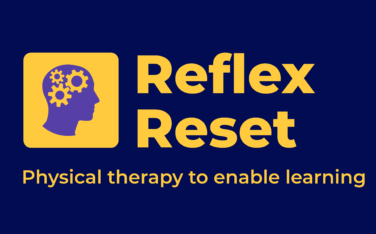Primitive Reflexes
The primitive reflexes are a group of motor reflexes found in newborn babies. They develop in utero and share the characteristics of being present at birth in a full-term, healthy baby and are mediated or arise from the brainstem.
A reflex is an immediate involuntary response evoked by a given stimulus. All reflex responses are involuntary and are not cognitive or actively set off. A stimulus which triggers a reflex always results in the same response. Primitive reflexes are motor/movement reflexes and specific stimuli will lead to the same pattern or sequence of movements.
The first of the primitive reflexes to emerge in utero is the Moro reflex, which appears between nine – twelve weeks after conception. In the first year of life, as a child grows and matures, the primitive reflexes are integrated or absorbed and replaced by the postural reflexes. Primitive reflexes never disappear but can be activated deliberately and they might gradually re-emerge with aging. Following head injury or cerebral insult or disease, they may dramatically re-appear.
What is the purpose of the primitive reflexes?
The role of primitive reflexes is two-fold: firstly, to help with survival in those delicate early months when the baby’s nervous system is not fully connected and secondly, to assist the baby to move. Reflex movement is patterned, consistent and involuntary movement but this movement helps to make the baby aware of his body and his surroundings. Gradually, as the primitive reflexes retreat or are integrated, conscious voluntary movements will be established.
By the time a child is of school age, all the primitive reflexes should be integrated and the postural reflexes present.
The primitive reflexes can be divided into three groups – the multisensory reflex (Moro reflex), primitive reflexes of position and the primitive tactile reflexes.
Primitive reflexes of position
There are three primitive reflexes of position – the Tonic Labyrinthine Reflex (TLR), the Asymmetrical Tonic Neck Reflex (ATNR) and the Symmetrical Tonic Neck Reflex (STNR). These reflexes affect all four limbs. The TLR is vestibular in origin; that is, it is affected by head position and activated by the labyrinthine apparatus of the ear. The tonic neck reflexes (ATNR and STNR) are activated by cervical spine position or the position of the neck, so by default the position of the head as well.
Primitive tactile reflexes
There are many primitive tactile (grasp) reflexes and, as their name suggests, these reflexes are triggered by touch. In order of their appearance, these are the Palmar, Plantar, Spinal Galant, rooting, suck and swallow, and Babinski reflexes.
